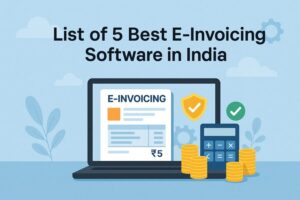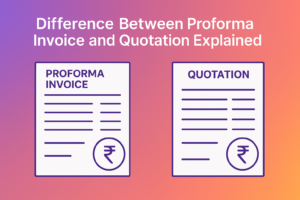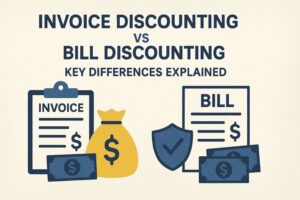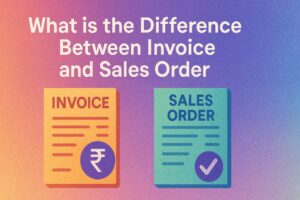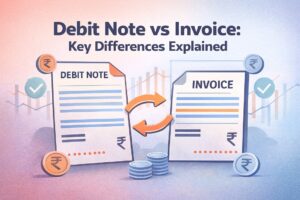Difference Between FOB Value and Invoice Value: A Complete Guide for Exporters
- 19 Nov 25
- 8 mins
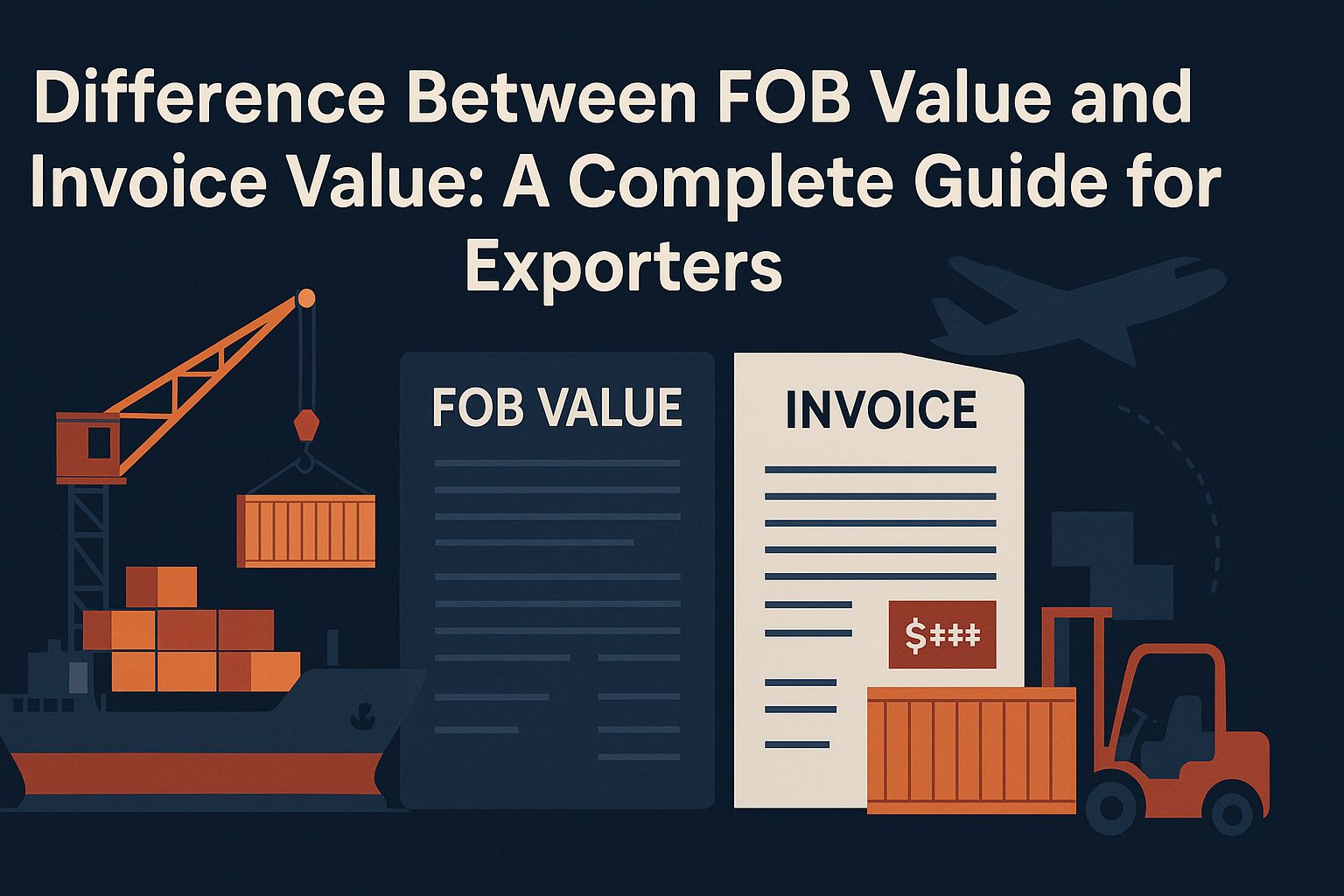
Difference Between FOB Value and Invoice Value: A Complete Guide for Exporters
Key Takeaways
- The difference between FOB value and invoice value lies in the cost components. FOB covers costs only up to loading on the vessel, while invoice value includes freight, insurance, taxes, and other charges.
- FOB value is crucial for export-related incentives such as RoDTEP and duty drawback, whereas invoice value is essential for customs duty, GST, and payment settlements.
- Indian customs rely on FOB value for export processing, while the importing country uses invoice value for duty calculation.
- Mismatches between FOB and invoice values in invoices and shipping bills can delay GST refunds and trigger compliance scrutiny.
- Understanding the difference between FOB value and invoice value helps businesses maintain accurate documentation and avoid errors in international trade.
Understanding the difference between FOB value and invoice value is crucial in international trade and export documentation. These two terms play a significant role in taxation, pricing, and customs clearance.
FOB (Free on Board) value refers to the cost of goods up to the point of shipment, excluding freight & insurance charges. Invoice value, on the other hand, is the total amount payable by the buyer, including freight & insurance, handling, and transport charges.
Having a detailed knowledge about this distinction enables export/import businesses to calculate taxes accurately and maintain transparency in trade.
FOB vs Invoice Value: What’s the Difference?

The table below displays key difference between FOB value and invoice value:
| Parameters | Free on Board Value (FOB) | Invoice Value |
| Purpose | Denotes the point of ownership transfer and risk from seller to buyer. | The chargeable total amount for goods and services including several other costs and taxes. |
| Focus | Focuses on goods cost till goods loading on the shipping vessel. | Focuses on total costs of the actual transaction, which includes several other costs and profit. |
| Inclusions | Costs of goods to transfer, packaging, loading charge, local transportation charges till the port. | Freight & insurance charges, FOB value, and handling fees. |
| Exclusions | Freight & insurance after loading onto the vessel, and marine insurance | Might or might not exclude duties and taxes |
| Used for | Calculation of incentives relating to export, such as MEIS, RoDTEP | Valuation of import and custom duty calculation |
| Documents Required | Shipping bills | Commercial invoice and import bill of entry |
| Fixed or Variable | Fixed till the goods are not transferred to vessel | Varies depending on the terms of contract and charges |
| Role of Customs | FOB value is used by Indian customs for processing exports | The importing country considers invoice value for calculation of import duties |
| Significance for Exporters | Helps in achieving refunds and incentives, and used for GST law returns and bank filings | Let buyers depict total costs |
| Incoterm Basis | FOB (Free on Board) Responsibility of seller till loading of goods to the vessel | Depends entirely on the agreed term (e.g., Cost, Insurance & Freight) |
What is FOB Value?
FOB, or Free on Board (sometimes referred to as Freight on Board), represents the value of goods up to the point of export. When the goods are loaded onto the vessel at the exporting country’s port, the risk transfers from seller to buyer. FOB value typically appears on export invoices and shipping bills.
In simple terms, FOB includes costs for packaging, production, local transport to the port, and loading, but excludes international freight & insurance, and taxes imposed by the importing country.
How to Calculate FOB Value?
To calculate FOB value, we use the formula:
FOB Value = Ex-Factory Price + Local Costs (up to loading on vessel)
Local costs may include:
- Packing charges
- Inland transportation (to the port of export)
- Customs clearance fees
- Loading charges (at the port)
Example 1: Simple FOB Calculation
- Quantity of goods sold: 200 kg
- Rate per kg: ₹30
- Ex-Factory Price (200 × 30) = ₹6,000
Other Costs:
- Packing Charges = ₹1,200
- Transport to Port = ₹800
- Customs Clearance = ₹1,000
Total Other Costs = ₹3,000
FOB Value = ₹6,000 + ₹3,000 = ₹9,000
This FOB value is declared in shipping bills and represents the total cost of the goods delivered to the port, ready for loading onto the export vessel.
Example 2: Comprehensive FOB Calculation
- Ex-Factory Price: ₹1,50,000
- Inland Transportation to Port: ₹6,000
- Customs Clearance Charges: ₹4,000
- Loading Charges at Port: ₹3,500
- Packing Charges: ₹2,500
- Insurance (Contingency before shipping): ₹2,000
FOB Value = ₹1,50,000 + ₹6,000 + ₹4,000 + ₹3,500 + ₹2,500 + ₹2,000 = ₹1,68,000
In this case, FOB includes all expenses incurred up to the point of loading the goods onto the shipping vessel, excluding international freight and marine insurance.
What is an Invoice Value in GST?
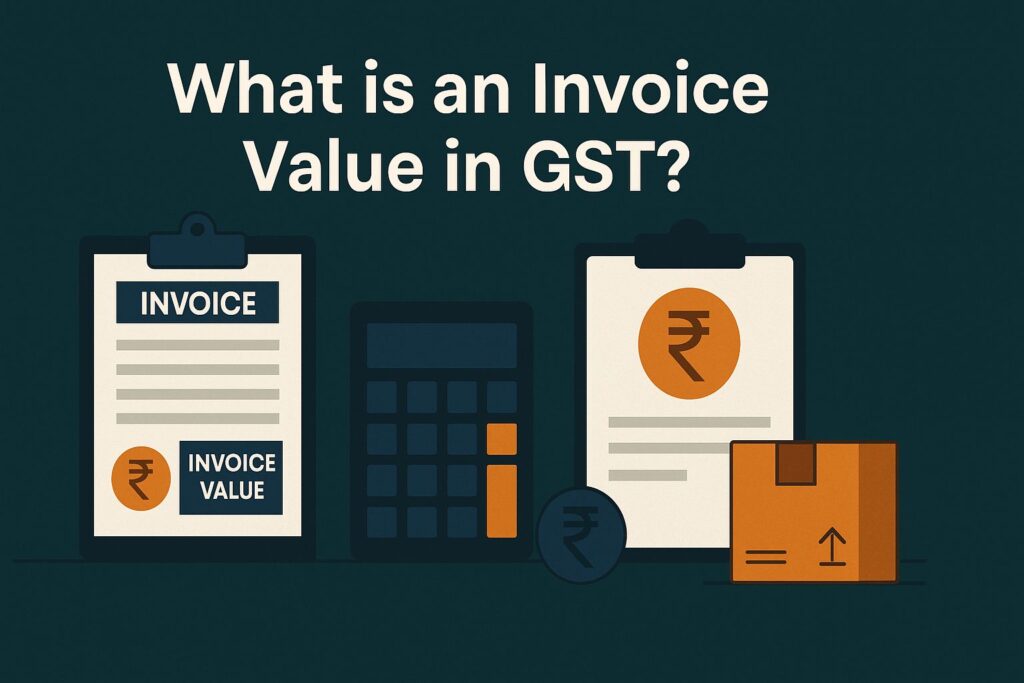
Invoice Value is the total price payable by the buyer as shown in the commercial invoice. In the Indian scenario, it encompasses:
- Price of the goods (can be FOB, Cost, Insurance & Freight or any other Incoterm value, depending on the contract)
- Plus: Any applicable taxes (such as GST)
- Plus: Any charges such as freight & insurance (if applicable)
- Minus: Discounts, rebates, if offered on the invoice
This value is also reflected in GST INVOICE/ Shipping Bill Value documentation.
How to Calculate Invoice Value?
Invoice Value=(Goods Price−Discounts)+Taxes+Shipping+Other ChargesInvoice Value=(Goods Price−Discounts)+Taxes+Shipping+Other Charges
Example:
If an Indian company sells machines worth ₹30,000 each (for 100 units):
- Subtotal: ₹30,00,000
- Packing: ₹2,000
- Freight: ₹8,000
- GST: 28%
- Discount: ₹10,000
Taxable Value=₹30,00,000+₹2,000+₹8,000−₹10,000 = ₹30,00,000
Taxable Value=₹30,00,000+₹2,000+₹8,000−₹10,000 = ₹30,00,000
GST=28% of ₹30,00,000 = ₹8,40,000
GST=28% of ₹30,00,000 = ₹8,40,000
Invoice Value = ₹30,00,000+₹8,40,000 = ₹38,40,000
This value must match across Shipping Bills and invoices to ensure proper GST Refund and regulatory compliance.
💡Generate e-invoices for your GST-registered business transactions with the PICE App.
Importance of FOB and Invoice Value in Indian Trade Documentation
Export Declaration (Shipping Bill)
Indian Customs Electronic Gateway (ICEGATE) mandates the declaration of both FOB Value and Invoice Value in the Shipping Bills. The FOB value holds particular significance for:
- Claiming duty drawback
- RoDTEP Scheme (Remission of Duties and Taxes on Exported Products)
- Export performance under Foreign Trade Policy
GST on Exports
Export of goods is considered zero-rated supplies for GST. Still, GST Refund (in the event of IGST paid on export) is permitted on FOB value or Invoice value, whichever is less.
For example, suppose your GST INVOICE/ Shipping Bill Value is ₹2,65,000 whereas FOB value is ₹2,30,000. GST Refund would typically be limited to the FOB value.
Bank Realisation Certificate (BRC)
Banks release a BRC upon foreign exchange realization, usually on the basis of Invoice Value. This is important for availing export benefits (under DGFT) as well as to be compliant with RBI policies.
3 Common mistakes Indian Exporters Make
1. Assuming Invoice Value as FOB
Exporters mistakenly believe that their total invoice value is equivalent to FOB, particularly when they quote Cost, Insurance & Freight (CIF) or CFR contracts. This may result in over-invoicing FOB in Shipping Bills, drawing penalties or disallowing incentives.
2. Under-declaration of Freight
Freight & insurance have to be separately declared in CIF/CFR exports. Benchmark freight rates are applied by customs authorities to check claims. Under-declared, it can lead to:
- Delays
- Increased scrutiny
- Non-processing of RoDTEP or GST refunds
3. Mismatch Between Invoice and Shipping Bill
Invoice value declared in the commercial invoice and that declared in the Shipping Bill has to match correctly. If not, it can cause:
- Delayed GST refund
- Customs queries
- DGFT audit discrepancies
Tips for Businesses in Handling Invoice Value and FOB Value
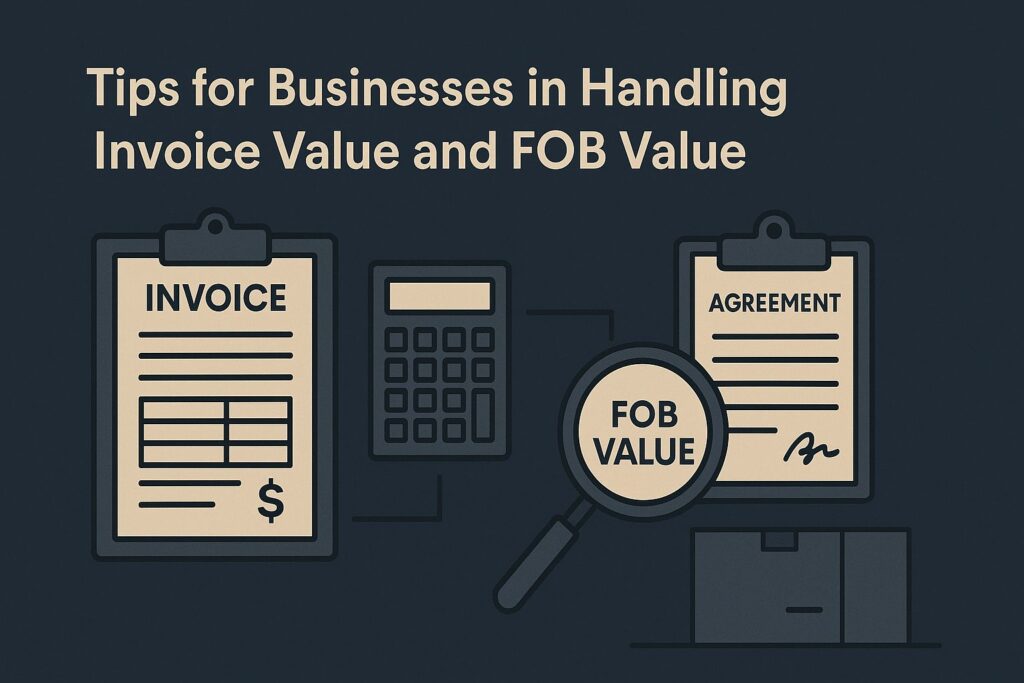
To manage international trade efficiently, businesses should:
Present Clear Documentation for FOB and Additional Charges
Keep a record of FOB value separately from insurance, freight, and other charges. Organise the bills of landing, invoices, and shipping documents. This enables easy tracking of costs and explains values if required.
Clarify Incoterms in the Contract
Use Incoterms like FOB or Cost, Insurance & Freight clearly in contracts to avoid confusion at the time of actual transaction. This enables both buyer and seller to understand duties and responsibilities. Also, it prevents confusion during payment, shipping terms, and customs.
Use Valuation Methods for Customs and Audit
Adopt a consistent approach when calculating FOB and invoice values. This is especially important when issuing invoices in advance or filing Shipping Bills and claiming GST Refund.
Consultation with Trade Experts for Accuracy
Freight consultants help calculate correct values and ensure compliance with GST law, DGFT guidelines, and IGST Value norms. They help ensure correct values and compliance with global standards.
Conclusion
To summarise, FOB value and invoice value are distinct yet equally important in global trade. While FOB clarifies the cost and risk up to the point of export, the invoice value reflects the total amount payable by the buyer.
Having a clear idea of the difference between FOB value and invoice value and accurately documenting both in Shipping Bills, invoices, and returns ensures smooth GST Refund processing and compliance with GST law. For export/import businesses, precision in IGST Value reporting and valuation documentation is essential for seamless global transactions.
 By
By 






